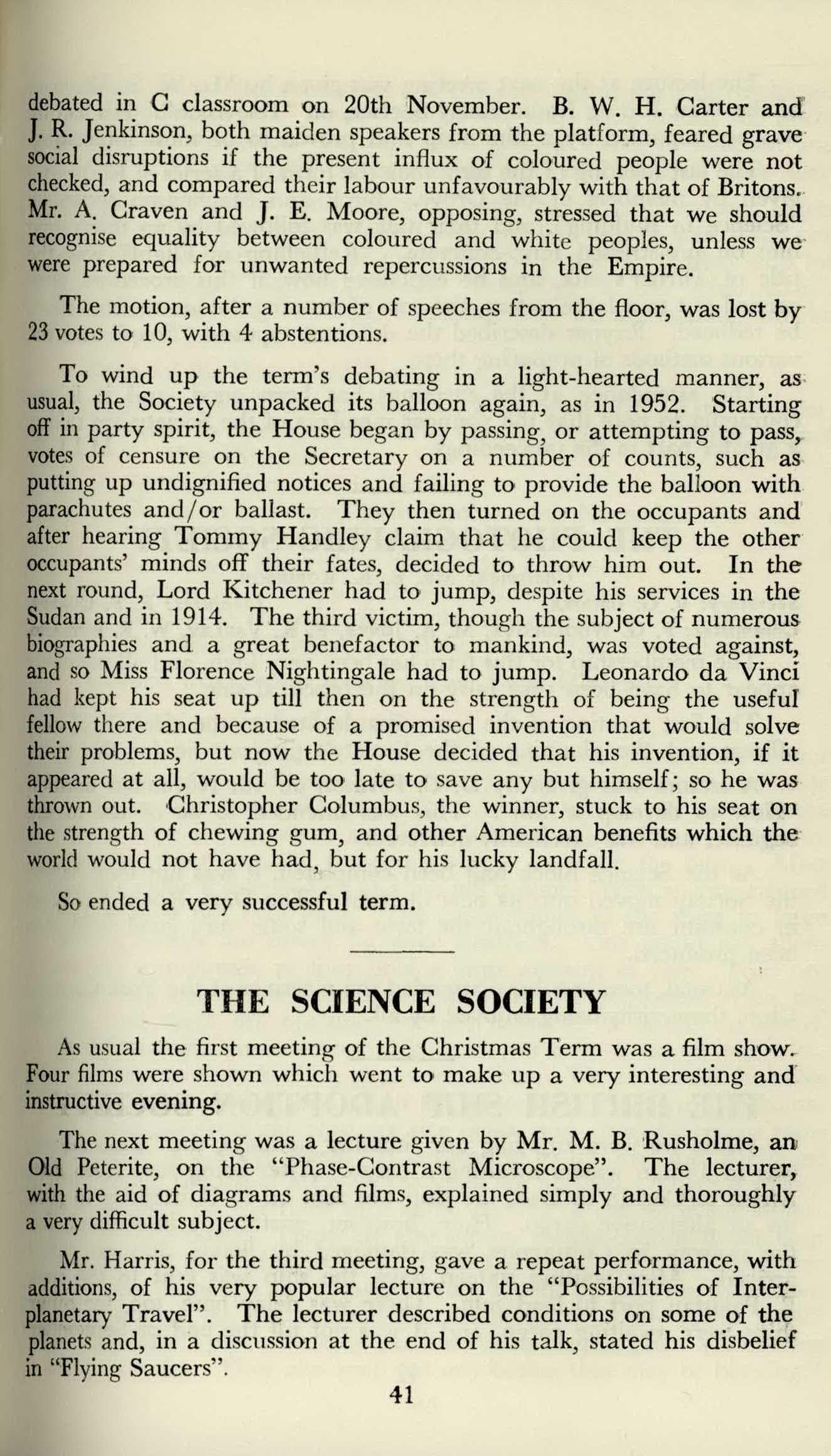
2 minute read
The Science Society
from Feb 1955
by StPetersYork
debated in C classroom on 20th November. B. W. H. Carter and J. R. Jenkinson, both maiden speakers from the platform, feared grave social disruptions if the present influx of coloured people were not checked, and compared their labour unfavourably with that of Britons.. Mr. A. Craven and J. E. Moore, opposing, stressed that we should recognise equality between coloured and white peoples, unless we were prepared for unwanted repercussions in the Empire.
The motion, after a number of speeches from the floor, was lost by 23 votes to 10, with 4 abstentions.
To wind up the term's debating in a light-hearted manner, as usual, the Society unpacked its balloon again, as in 1952. Starting off in party spirit, the House began by passing, or attempting to pass, votes of censure on the Secretary on a number of counts, such as putting up undignified notices and failing to provide the balloon with parachutes and/or ballast. They then turned on the occupants and after hearing Tommy Handley claim that he could keep the other occupants' minds off their fates, decided to throw him out. In the next round, Lord Kitchener had to jump, despite his services in the Sudan and in 1914. The third victim, though the subject of numerous biographies and a great benefactor to mankind, was voted against, and so Miss Florence Nightingale had to jump. Leonardo da Vinci had kept his seat up till then on the strength of being the useful' fellow there and because of a promised invention that would solve their problems, but now the House decided that his invention, if it appeared at all, would be too late to save any but himself; so he was thrown out. Christopher Columbus, the winner, stuck to his seat on the strength of chewing gum, and other American benefits which the world would not have had, but for his lucky landfall.
So ended a very successful term.
As usual the first meeting of the Christmas Term was a film show. Four films were shown which went to make up a very interesting and instructive evening.
The next meeting was a lecture given by Mr. M. B. Rusholme, an Old Peterite, on the "Phase-Contrast Microscope". The lecturer, with the aid of diagrams and films, explained simply and thoroughly a very difficult subject.
Mr. Harris, for the third meeting, gave a repeat performance, with additions, of his very popular lecture on the "Possibilities of Interplanetary Travel". The lecturer described conditions on some of the planets and, in a discussion at the end of his talk, stated his disbelief in "Flying Saucers".










